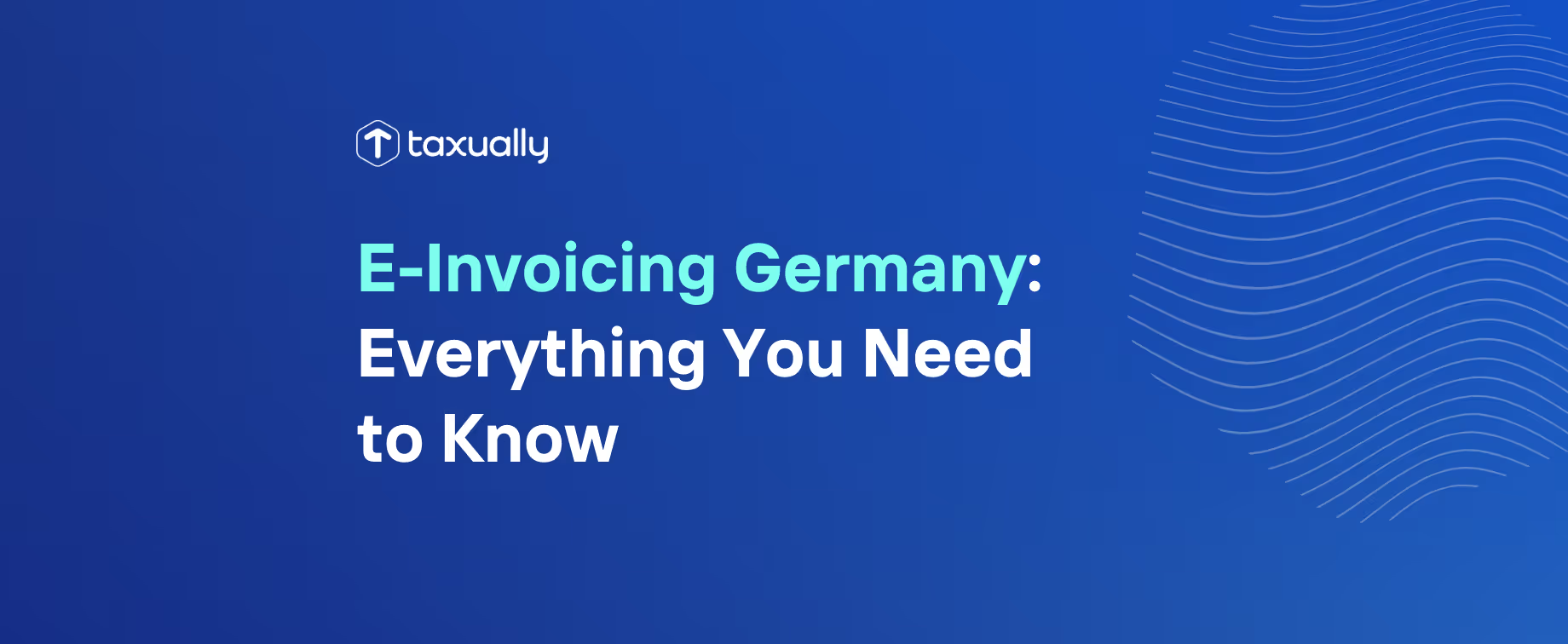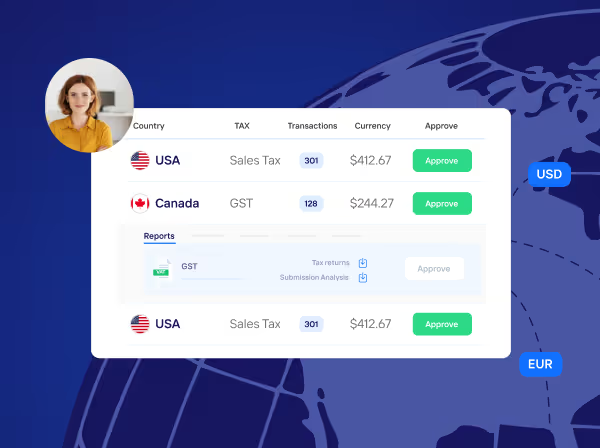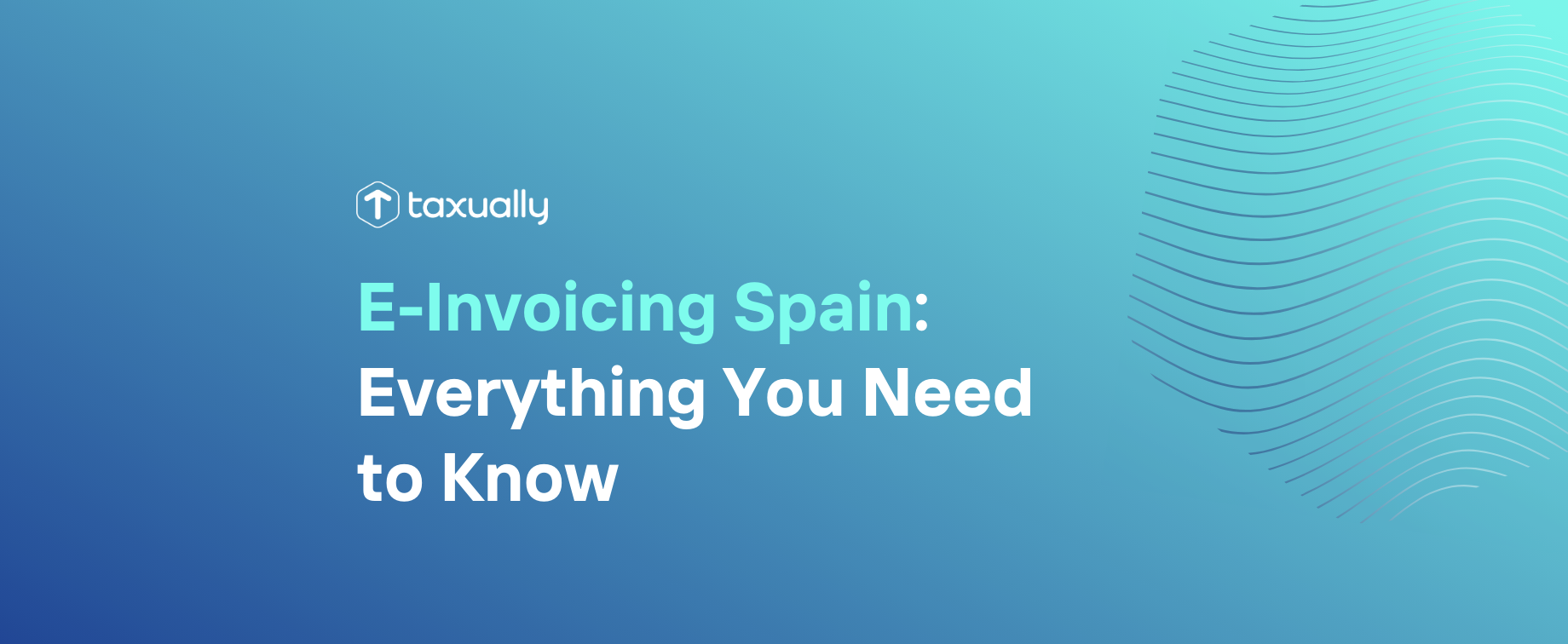Key takeaways
- Mandatory rollout began in 2025: All businesses in Germany must be able to receive structured e-invoices as of January 1, 2025, with full B2B issuance required by 2028.
- Only structured formats are accepted: Valid e-invoices must comply with EN 16931 and use formats like XRechnung or ZUGFeRD, not PDFs or Word files.
- Preparation is essential: Businesses need to update ERP systems, choose compliant transmission methods (e.g., Peppol or EDI), and ensure data accuracy for seamless electronic processing.
Germany is undergoing a major shift in how businesses issue and receive invoices. From 2025 onwards, mandatory e-invoicing will begin rolling out across domestic B2B transactions. This transition is part of a broader European effort to modernize VAT compliance, improve efficiency, and reduce fraud. For businesses operating in Germany, this means preparing for structured electronic invoices, adapting software systems, and ensuring seamless electronic processing of invoice data.
If your company is involved in invoicing in Germany, understanding the new requirements is not optional. This guide covers the core concepts, compliance deadlines, supported formats, and more.

Why Germany is mandating e-invoicing
The German government passed the Growth Opportunities Act (Wachstumschancengesetz) in 2024, which introduced a phased rollout of electronic invoicing in domestic B2B transactions. The reform aligns German tax policy with the EU’s VAT in the Digital Age (ViDA) initiative, a sweeping modernization effort aimed at standardizing VAT rules and increasing transparency across member states.
By mandating e-invoice usage, Germany hopes to reduce tax evasion, streamline financial processes, and give businesses tools for automation and improved data accuracy. Invoices issued in structured electronic formats can be processed directly by ERP systems, eliminating many of the inefficiencies associated with paper or PDF-based invoicing.
Key dates for mandatory e-invoicing in Germany
The transition to mandatory e-invoicing Germany will take place in three phases, giving businesses time to adapt:
- January 1 2025: All businesses must be able to receive structured e-invoices. PDF or paper can only be used if the buyer explicitly agrees.
- January 1 2027: Businesses with an annual turnover over €800,000 must issue structured e-invoices.
- January 1 2028: E-invoicing becomes mandatory for all German-established businesses in B2B transactions.
Note: These rules only apply to domestic B2B transactions for now. B2C and cross-border invoicing remain unaffected, though changes are expected later.
What qualifies as an e-invoice?
An e-invoice under the new rules is more than just a digital document—it must be structured in a way that enables electronic processing. Specifically, an e-invoice must:
- Be issued, transmitted, and received in a structured electronic format.
- Comply with the EU standard EN 16931, which defines the essential content and layout of invoice data.
- Allow for full automation of the invoice lifecycle—from issuance to validation and archiving—without manual intervention
This means that commonly used formats like Word documents or simple PDFs, even when sent by email, no longer meet the legal definition of an invoice. Instead, Germany will require invoices to be issued in machine-readable XML-based formats that allow systems to interpret and process the data directly.
Accepted e-invoice formats in Germany
Germany’s approach to mandatory e-invoicing is technology-neutral but format-specific. That means businesses have some flexibility as long as they use an accepted standard that complies with EN 16931. The main formats supported include:
- XRechnung, a structured XML format specifically developed for the German public sector. It’s already mandatory for B2G (business-to-government) invoices and is expected to play a key role in the B2B rollout as well.
- ZUGFeRD, a hybrid format combining a human-readable PDF/A-3 with an embedded XML data file. This format is particularly appealing because it offers visual readability for users and machine-readability for systems. The latest version, ZUGFeRD 2.3.3, is fully EN 16931-compliant.
- Factur-X, the French equivalent of ZUGFeRD, is interoperable with German standards and widely used in cross-border invoicing.
- Other structured XML formats, such as UBL or Peppol BIS Billing 3.0, are also permitted if both sender and receiver agree on their use and if they meet the required content standard.
These formats enable electronic data interchange (EDI), allowing seamless communication between accounting systems while meeting legal and audit requirements.

How will invoices be transmitted?
Germany will allow a range of methods for transmitting e-invoices, depending on the format used and the agreement between trading partners. Traditional electronic data interchange remains an option, as long as the content adheres to the EN 16931 standard.
Businesses may also use the Peppol network, an EU-backed infrastructure that enables secure and standardized exchange of electronic documents. Peppol is already in use for B2G transactions in many EU countries and offers a scalable way to handle cross-border and domestic invoicing alike.
Alternatively, companies can rely on third-party service providers or e-invoicing platforms to manage generation, transmission, and receipt of e-invoices. These services can help with converting legacy PDFs into structured formats during the transition period and offer tools for compliance and archiving.
How to prepare your business for mandatory e-invoicing
Adapting to Germany e-invoicing requirements involves more than flipping a switch. It’s a process that touches finance, IT, legal, and compliance teams. To get ready:
- Review your ERP or accounting system’s capabilities. Can it export invoices in XRechnung or ZUGFeRD format?
- Ensure you can receive and import structured e-invoices automatically—this is mandatory as of 2025.
- Evaluate whether direct EDI, Peppol, or a third-party provider is best suited for your invoice flows.
- Train your staff on the new formats, validation steps, and any exception-handling procedures.
- Implement secure e-archiving that meets Germany’s GoBD rules on data integrity, retention, and auditability.
- Clean up your master data—customer information, VAT IDs, and product details need to be accurate to avoid validation errors.
For companies with high invoice volumes, early investment in automation will pay off quickly. Once invoices flow directly into your system with no human intervention, you'll reduce delays, errors, and reconciliation issues significantly.
What about the electronic reporting system?
While Germany has not yet rolled out a full electronic reporting system, one is expected in the future. The current e-invoicing mandate is seen as a first step toward real-time invoice reporting to the tax authorities, similar to what countries like Italy and France already require.
Building e-invoicing capabilities now will make it much easier to comply with future e-reporting rules when they arrive.
Conclusion
Germany’s move to mandatory e-invoicing is more than a compliance update—it’s a shift toward faster, more efficient business processes. By adopting structured electronic formats and enabling electronic processing, businesses can reduce manual work, improve accuracy, and prepare for potential future requirements like real-time reporting. Taking steps now to modernize your invoicing systems will not only ensure compliance but also position your company for long-term digital success in the German market.
Do you need help with your VAT compliance? Book a free call with one of our VAT experts to find bespoke solutions for your business, optimize your VAT costs, and reach millions of new potential customers with our automated VAT solutions.
Frequently asked questions
New Year's Day - 1/1/2024Memorial Day - 5/27/20244th of July - 7/4/2024Labor Day - 9/2/2024Thanksgiving Day - 11/28/2024Day after Thanksgiving - 11/29/2024Christmas Eve - 12/24/2024Christmas Day - 12/25/2024
Who is affected by the e-invoicing mandate in Germany?
All businesses established in Germany that issue or receive B2B domestic invoices will be affected, with requirements phased in from 2025 to 2028.
What formats are accepted for e-invoices?
Accepted formats include XRechnung, ZUGFeRD, Factur-X, and other EN 16931-compliant XML formats agreed upon by both parties.
When do I need to start issuing e-invoices?
- From 2025, you must be able to receive e-invoices.
- From 2027, if your turnover exceeds €800,000, you must issue them.
- From 2028, issuing becomes mandatory for all domestic B2B transactions.
Is cross-border or B2C invoicing included?
Not yet. The current mandate applies only to domestic B2B transactions, but expansion to other areas is likely in the future.
What is the purpose of the mandate?
The goal is to modernize VAT reporting, reduce fraud, improve efficiency, and prepare for real-time electronic reporting to tax authorities.



















